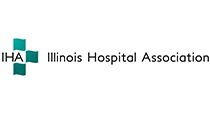IHA case studies
Reduction in Blood Culture Contamination Rates in the ED Through Use of Skin Cleansing and Antisepsis Prior to Blood Draw

July 2009-October 2011 baseline data for the blood culture contamination rate in the ED showed it was averaging 4.6 percent, above the national average of 3 percent. The ED staff had unsuccessfully tried various interventions to reduce the rate of contaminated blood cultures.
In September 2011, a multidisciplinary team was developed to address the issue of blood culture contamination. The approach included cleaning the patient’s skin prior to blood draw with a baby wipe and then prepping it according to standards using chlorhexidine.
Since the initiative began, the contamination rate for blood cultures has decreased to 3.4 percent.
This case study is part of the Illinois Hospital Association's annual quality awards. Each year, IHA recognizes and celebrates the achievements of Illinois hospitals in continually improving and transforming health care in the state. These hospitals are improving health by striving to achieve the Triple Aim--improving the patient experience of care (including quality and satisfaction); improving the health of populations; and reducing the per capita cost of health care.
Award recipients achieve measurable and meaningful progress in providing care that is:
- Safe
- Timely
- Effective
- Efficient
- Equitable
- Patient-centered
(The Institute of Medicine's six aims for improvement.)
Additional Resources
Equity of Care Webinar SeriesPart 2: Aligning Diversity and Inclusion, Community Engagement, Busi......
VIEW THIS RESOURCEEquity of Care Webinar SeriesPart 1: Aligning Diversity and Inclusion, Community Engagement, Busi......
VIEW THIS RESOURCETransportation and the Role of Hospitals This AHA webinar on “Transportation and the Role of Hos......
VIEW THIS RESOURCE

